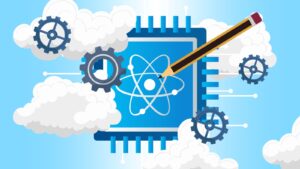Let’s start with the fundamental question, what is OCR? It is simply the technology used to process images of text and convert that text into forms that a machine can read.
In other words, it takes handwritten or typed material on physical paper and turns it into digital formats so that it may be accessed electronically.
In the 1990s, many owners of businesses started converting physical documents into digital files using OCR. Since then, there has been a rising demand for broader optical character recognition applications, and in recent years, Artificial intelligence was added to the mix!
The capabilities of optical character recognition (OCR) tools are being revolutionized due to the introduction of artificial intelligence.
As the quality of OCR technology has significantly improved, OCR’s utility has dramatically increased thanks to recent breakthroughs in AI.
Which have resulted in improved accuracy and increased speed. Because of the capabilities of AI, human supervision is not required for every step.
OCR Usage in Modern Companies
Text recognition is another name for optical character recognition (OCR), which stands for visual character reading. The data from scanned papers, camera photos, and image-only pdf can be extracted and reused with the help of an OCR tool making modern companies utilize their data and information much better.
This opens the opportunity to access and change the original material; in addition to this, it eliminates the requirement for manually entering data.
Optical character recognition systems use a combination of hardware and software to transform physical, printed documents into text that a machine can read.
OCR software can use advanced technology services to implement more complex optical character recognition of artificial intelligence, such as distinguishing languages or styles of handwriting.
This can be accomplished through intelligent character recognition, where users can edit, format, and search the documents in the same manner.
Why is optical character recognition artificial intelligence important?
AI can better decipher handwriting, creating new possibilities for document digitization.
Due to each person’s distinctive handwriting, AI is still challenged by it, but with more handwriting training data, robots are also becoming better at it.
Imagine an OCR tool transforming print bills into digital copies as an example of AI-powered OCR.
Before AI, the OCR program would miss this error, and a human reviewer would be responsible for seeing it. However, an algorithm may review the entire document using AI technologies, and with machine learning, the accuracy of OCR can reach 99.9%, which is unbeaten.
How does OCR technology work?
The physical form of a document is analyzed by an optical character recognition (OCR) system with the help of a scanner.
After all the pages are duplicated, the OCR software transforms the document into a version that is either two colors or black and white.
The scanned-in image or bitmap is studied for areas of light and dark, with the dark parts being determined to be characters that need to be recognized and the light portions being chosen to be the background.
The dark patches are then processed to locate letters of the alphabet or digits of a numerical sequence.
After that, characters are recognized by utilizing either pattern recognition or feature recognition, both algorithms.
For the OCR system to start comparing and recognizing characters in the scanned document or image file, pattern recognition is utilized by providing the program with text examples in various typefaces and formats.
When an optical character recognition artificial intelligence recognizes characters in a scanned document by applying rules based on the characteristics of a particular letter or number, this process is referred to as feature detection.
Benefits of optical character recognition software
- Reduces expenses.
- Speeds up workflows.
- Automates content processing and document routing.
- Data centralization and security.
- Ensures staff members have access to the most recent and correct information to improve service.
Why choose Fotopia?
We are offering you FotoGnize, the OCR tool for your enterprise content management system with artificial intelligence and machine learning capabilities.
Fotognize is a multi-lingual OCR tool that helps you speed up your document management efforts so you can find and retrieve any information in seconds.





